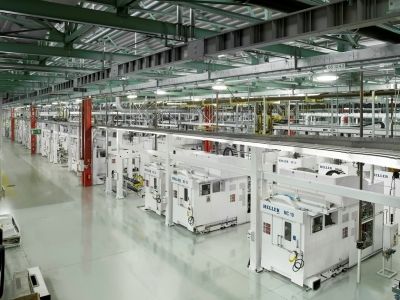Heller Industry 4.0 Products Focus on Transparency, Ease of Operation
Heller Machine Tools' Industry 4.0 approach is to enhance transparency of the current machine status and evaluate the information gained in combination with existing data to allow purposeful diagnostics, yielding better productivity and value for the user.
Heller has further developed the linkage of industrial production with digitization and network integration of information and production technologies in terms of its machine tools. While achieving this, efficient and productive manufacturing and the reduction of workpiece costs continue to be the main goal.
During AMB 2016 in Stuttgart, Heller presented three examples demonstrating the importance of ease of operation, customized manufacturing of the workpiece, and expanded evaluation of existing sensor data.
Heller4Operation is an easy-to-use, operator-oriented user interface for Heller machines. The use of touch controls at the tool/workpiece loading station enables fast and robust operation. In addition to the familiar Siemens standard operation, the new main operator panel allows execution of customer-specific programs from web environments. The 24" touch interface named Heller Operation Interface can be upgraded with expansion programs, so-called Xtends, enhancing performance and functionality.
The second area, Heller4Services, comprises digital services. The Heller Services Interface focuses on transparency of manufacturing and maintenance processes. The module forms the basis for evaluations and statistics, thus providing support in reducing machine downtimes. Additionally, the visualization of specific information, including status displays of axes, spindles or other assemblies, enables users to determine wear and to take preventive measures in order to avoid unscheduled downtimes.
The third area, Heller4Performance, comprises the machine analysis for process and performance optimization and time-synchronous extraction of real-time data into the internet, as well as evaluation and graphical display, e.g. using the SAP-HANA internet platform. Together with SAP, Heller has demonstrated the specific benefits of this online streaming function with the mapping of a CAD-designed 3D workpiece in the cloud.





